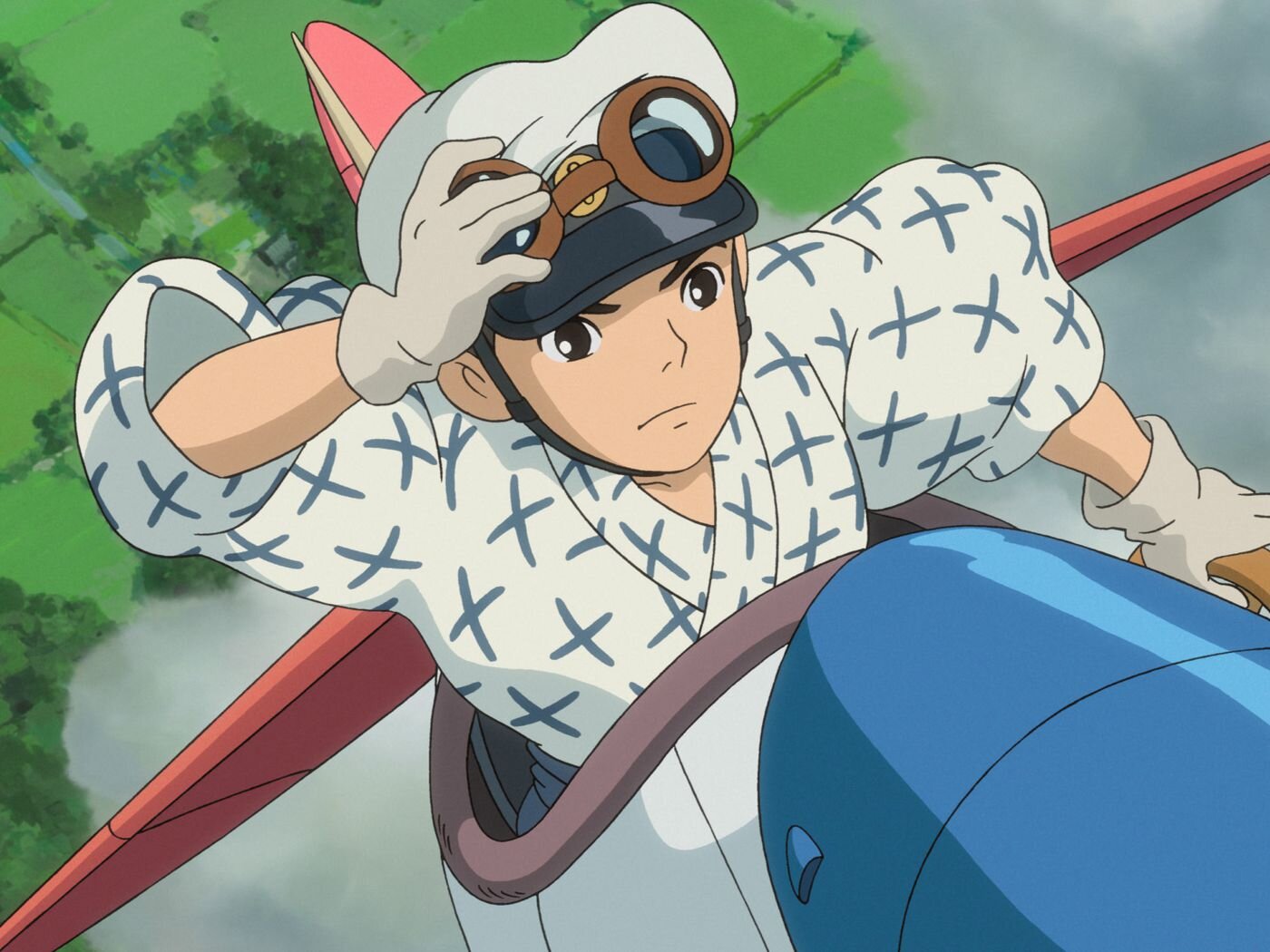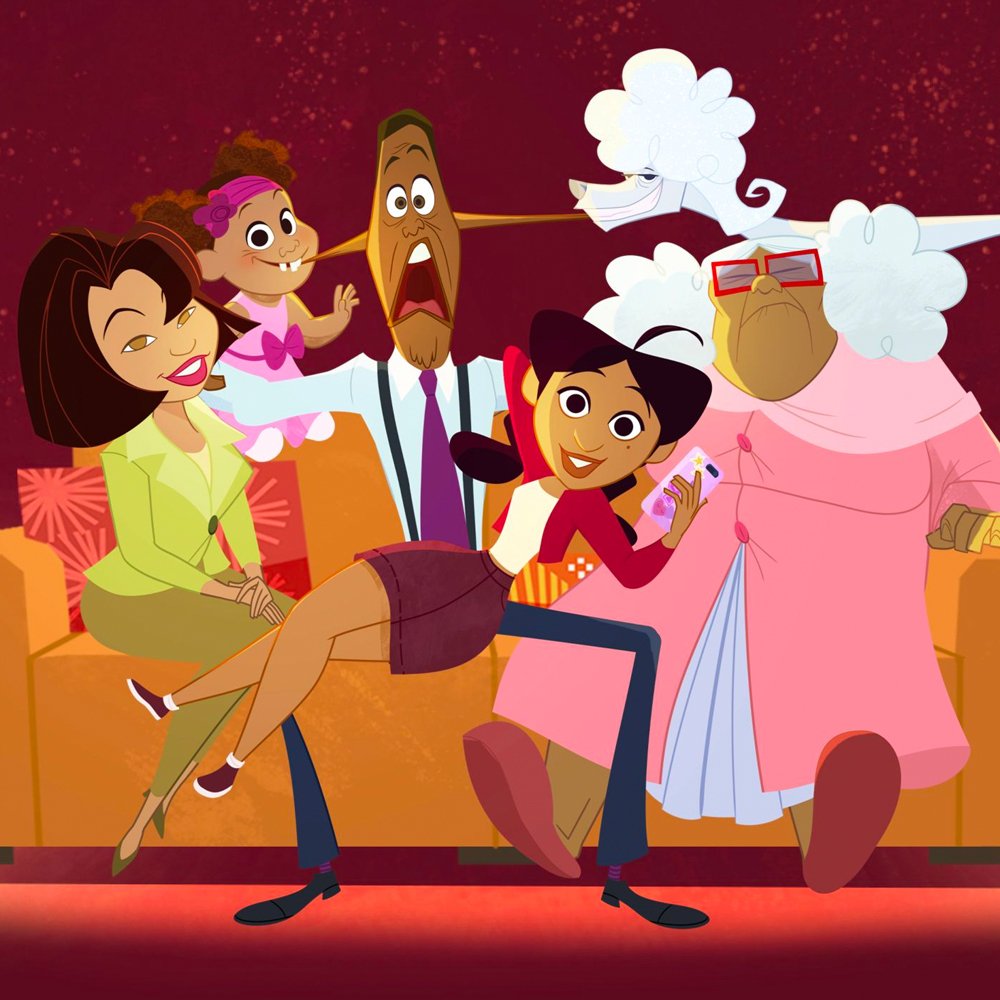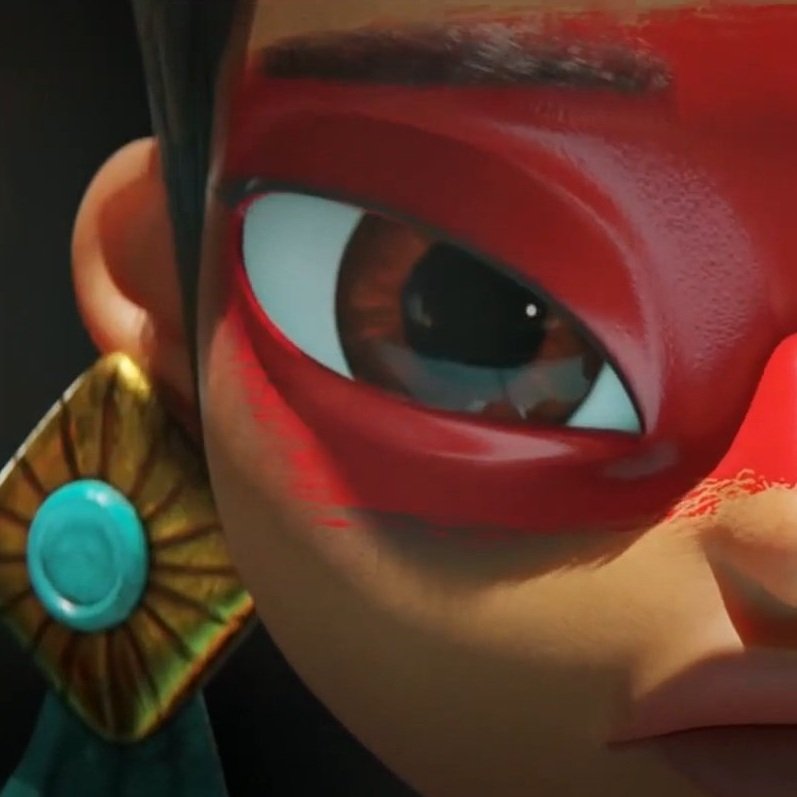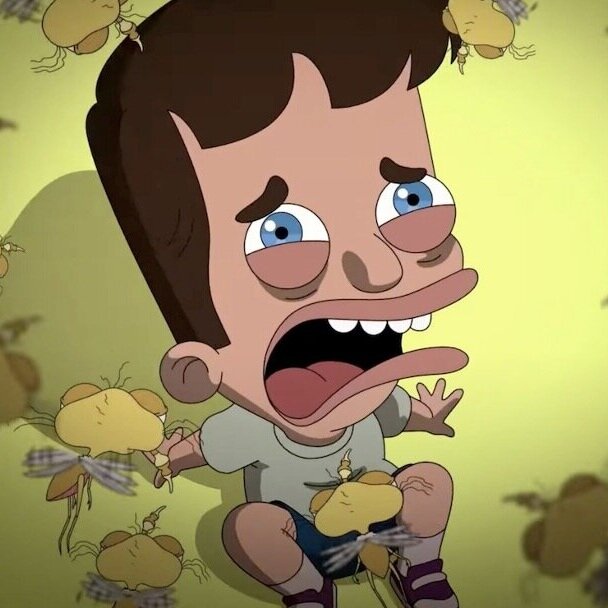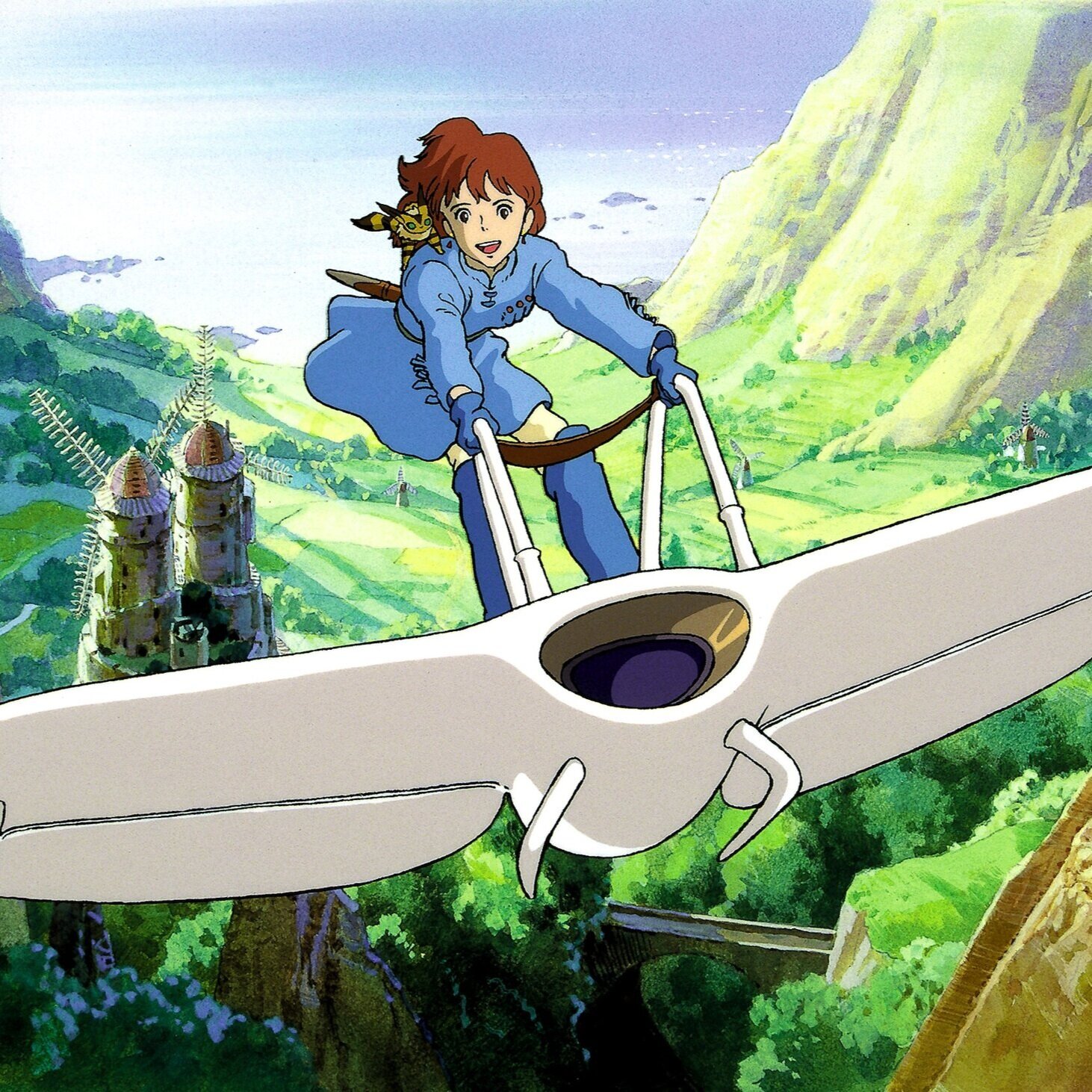The Wind Rises... We Must Try to Live
The reviews of Hayao Miyazaki’s The Wind Rises missed the point of what is quite possibly one of the best films ever made, animated or otherwise. The Wind Rises was sharply criticized in Japan by both nationalists, for being anti-Japanese, and pacifists, for glorifying a weapons designer and downplaying Japanese war crimes. It provoked strong reactions internationally as well. Most of the complaints against the film’s politics have very little merit, however, given Miyazaki’s long-standing and outspoken pacifism, his condemnation of Japan’s role in the Second World War, and his explicit opposition to the revision of Japan’s pacifist constitution. The film also essentially leaves the natural path of the narrative several times to emphatically condemn Japan’s fascist government. For part of the film, Jiro Horikoshi designs planes for the Japanese government while hiding from the Japanese secret police after he briefly socializes with a German anti-fascist. Nonetheless, this controversy seems to have distracted reviewers of the movie.
While no major review mentioned that The Wind Rises was partly an adaptation of a 1937 novel by Tatsuo Hori, The Wind Has Risen, almost all of the film’s reviews spent a large amount of time discussing Jiro Horikoshi’s role in designing the Zero. Even David Denby’s review in The New Yorker, at only 150 words, mentions that “Miyazaki’s hero, Horikoshi, eventually created the forerunner of the Mitsubishi A6M, or Zero, the fighter-bomber that was used to subdue China and assault Pearl Harbor,” though the film ends before either of these conflicts. Tasha Robinson, writing for The Dissolve, accurately notes that the film is not truly a biopic, but simply saying that the film “mixes in biographical details from the life and work of Japanese author Tatsuo Hori” is incredibly lazy. The review doesn’t mention anything about The Wind Has Risen. There are no obvious connections between the film and the life of Hori, and the review absurdly suggests that the second half of the film draws on Hori’s life story instead of The Wind Has Risen. (Hori suffered from tuberculosis, but in his novel and in Miyazaki’s film, it is the protagonist’s wife who has tuberculosis.) It’s irrelevant, however, because the review goes back to the easier task of writing about the Second World War and Miyazaki’s oft remarked-on love of flight. No major review mentioned the film’s allusions to The Magic Mountain or its dream-like metafictional unrealism. Robinson writes that the second half of the film is poorly integrated and is “achingly sentimental in a way that rubs against the grain of the film’s more practical elements.” She, like many reviewers, confuses the film’s premise for its purpose. The film is centered around Horikoshi and airplane design, but it isn’t ultimately about either. The film’s second half, further, has a sincere truth that builds on the sentimentality of the first half of the film in a manner that Robinson completely misses. In the first half, Horikoshi believes his dedication to art will exempt him from the struggles of life. In the second half, he realizes his dedication to art has in fact denied him life and made it harder for him to try to live. The second half, indeed, has a lighter, less grounded touch. This tone is largely borrowed from The Wind Has Risen. In both, the helplessness of terminal illness and the thin line between story and allusion create a contemplative melancholy. By placing this after Horikoshi’s earnest attempt to make airplanes rather than in isolation, like in Hori’s novel, Miyazaki is borrowing the resigned mood to meditate on the life-denying act of making art. Stepping back and looking at the allusions and themes of The Wind Rises, one can see the true scope of its ambitions.
“Le vent se lève,” Miori Takimoto, playing Naoko Satomi, says in a strong Japanese accent. “Il faut tenter de vivre” replies Hideaki Anno, a Japanese animator and director, playing Jiro Horikoshi, a Japanese airplane designer, in The Wind Rises, before the Great Kanto Earthquake of 1923 derails the train they are riding on. The lines they are quoting, from Paul Valéry’s 1922 poem, “Le Cimetière marin” (“The Graveyard by the Sea”)—“Le vent se lève! … il faut tenter de vivre!” (“The wind is rising! … We must try to live!”)—appear, also in French, in The Wind Has Risen. The Wind Rises, like “Le Cimetière marin” and The Wind Has Risen, is densely allusive. Despite their different English translations, the film and the novel have identical titles in the original Japanese, and it is impossible to understand the former without the latter.
Hori wrote The Wind Has Risen between 1936 and 1938. Hori, like many of his characters, was afflicted with tuberculosis throughout his life. The Wind Has Risen is very short, with fewer than forty pages. The writing is both elegantly lyrical and suffused with a delicate melancholy. The book begins with a sudden breeze overturning a painting and easel. The male narrator retrieves it for his fiancée, Setsuko. He and Setsuko go to a sanatorium, and he stays by her side as she slowly dies of tuberculosis. The book ends, just over a year after Setsuko’s death, with the line, “Leftover gusts of wind are blowing a few leaves around, making a weak rustling noise at my feet.” There are so many similarities between The Wind Has Risenand The Wind Rises that the differences are all the more striking. In Miyazaki’s film, Jiro retrieves Naoko’s wind-blown painting, Naoko goes to a sanatorium, and she dies of tuberculosis. In Hori’s book, the narrator goes to the sanatorium to be with Setsuko, while in Miyazaki’s film, Naoko leaves the sanatorium to be with Jiro. And, in The Wind Rises, Naoko leaves the home where she and Jiro live so no one will witness her death. When she dies, Jiro is at the test flight of his Mitsubishi A5M. A gust of wind causes him to realize Naoko has died.
While The Wind Has Risen is a meditation on love and death, The Wind Rises is a reflection on the costs of art. Jiro’s airplanes are used to aid a war he does not support and his obsession with making them prevents him from being with his wife when she is dying. “Airplanes are beautiful, cursed dreams, waiting for the sky to swallow them up,” Giovanni Caproni, an Italian airplane designer, tells Jiro in a dream. Miyazaki’s provocative argument is that art is intrinsically worthwhile, and that art should be made even if it harms both society and the author. “Which would you choose: a world with pyramids or a world without?” Caproni asks Jiro rhetorically.
The Wind Rises is a piece of metafiction. Airplane design stands in fairly transparently for animation. The choice of the middle-aged Japanese animator, Hideaki Anno, to voice the young Jiro Horikoshi is both striking and obvious in its implications. With The Wind Rises, Miyazaki reminisces on his career in terms of extremes. In the 2013 documentary, The Kingdom of Dreams and Madness, Miyazaki muses,
I need to hurry and finish this film [The Wind Rises]. You know, people who design airplanes and machines … No matter how much they believe that what they do is good, the winds of time eventually turn them into tools of industrial civilization. It’s never unscathed. They’re cursed dreams. Animation, too. … What I mean is, how do we know movies are even worthwhile? If you really think about it, is this not just some grand hobby?
He turns his uncertainty about the impact of his films into the horrific effects of Jiro’s work. Miyazaki, like Jiro, works obsessively, and he turns his guilt over a family he feels he often neglected into Jiro literally choosing to work instead of being present during his wife’s final days. In a 2011 interview with Cut Magazine, Miyazaki recounts why he chose to make a movie about a designer of fighter planes, “My wife and my staff would ask me, ‘Why make a story about a man who made weapons of war?’ And I thought they were right. But one day, I heard that Horikoshi had once murmured, ‘All I wanted to do was to make something beautiful.’ And then I knew I’d found my subject.”
The Wind Rises, being a personal meditation rather than seeking to tell a compelling narrative or convince the viewer of a particular message, has a wandering, dream-like quality to it. Jiro Horikoshi walks into the plot of The Wind Has Risen in the second half of the film. He and Giovanni Caproni have philosophical conversations in dreams throughout the movie. A middle aged German named Castorp drops in briefly to discuss The Magic Mountain and the coming Second World War. Hans Castorp, in Thomas Mann’s The Magic Mountain, is planning on taking up shipbuilding when he visits his tubercular cousin in a sanatorium and is himself diagnosed with tuberculosis. The novel ends with the beginning of the First World War. Castorp is an intrusion of one text into another, telling Jiro, “It is a nice night. Hier ist der Zauberberg.” Jiro, like every character in the film, catches the reference, replying, “The Magic Mountain, Thomas Mann.” Castorp then begins a lyrical monologue, musing, “Yes. A good place for forgetting. Make a war in China? Forget it. Make a puppet state in Manchuria? Forget it. Quit the League of Nations? Forget it. Make the world your enemy? Forget it. Japan will blow up. Germany will blow up, too,” and contradictorily prophesies that Germany will go to war again while warning that “they must be stopped.” Germany, though, is not kept from war. Jiro doesn’t even stop designing planes for the Japanese.
The industrial machine tramples over everything in The Wind Rises, and it can’t be stopped. Our dreams will aid it even if we don’t want them to. The most we can do, then, is try to live. It’s particularly disappointing that a film that argues art should exist for its own merits rather than to further outside ends was primarily seen in terms of its politics. The Wind Rises is the rare film that views its creation self-critically. The least it deserves is for the viewer to try to understand it with some of the same self-reflection.
